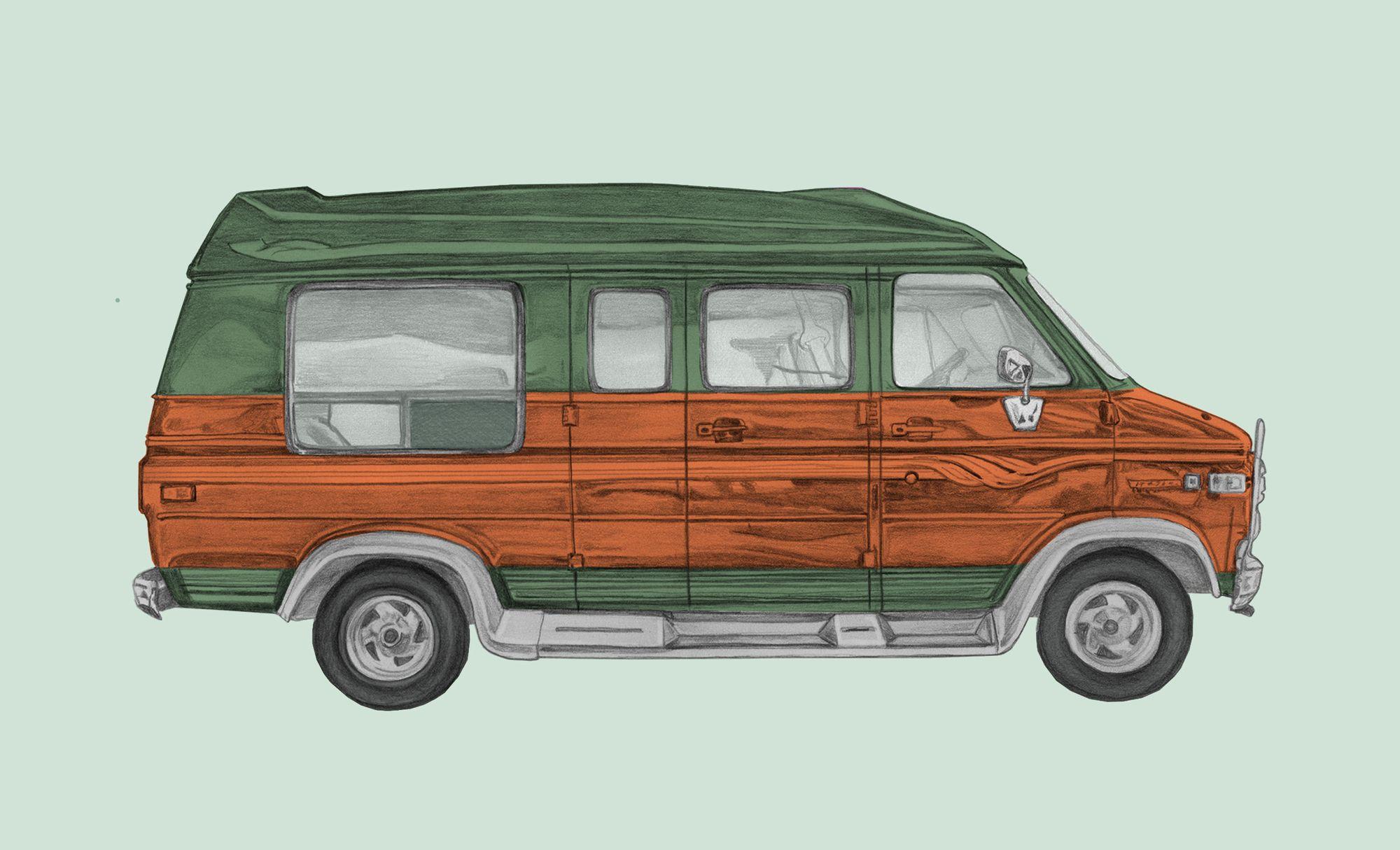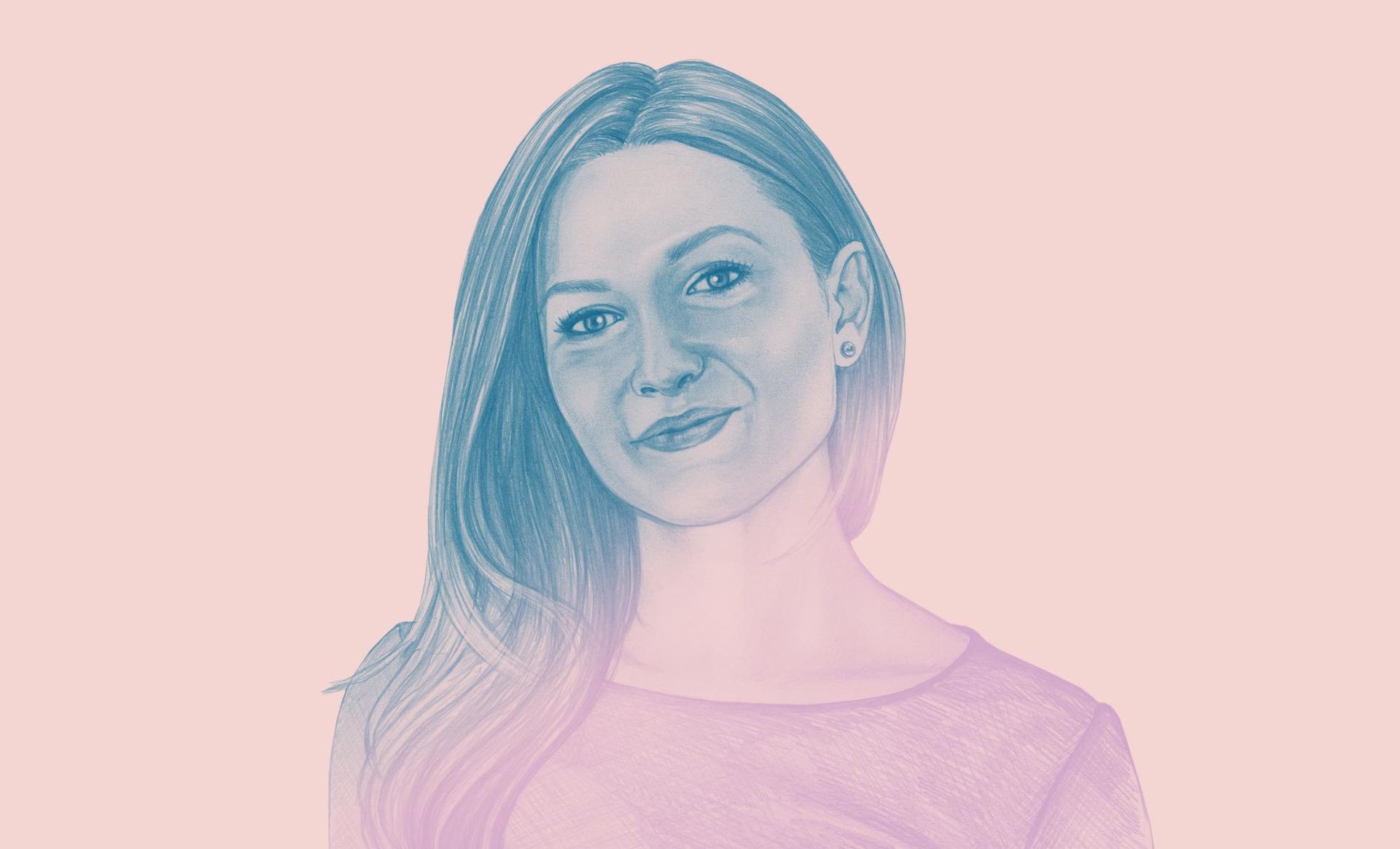
Money Diaries
Life Among America’s Four-Wheeled Nomads
LaVonne Ellis took to the road when she was 67. Six years later –– multiple vans, adventures, disasters, and miracles –– she's still figuring out how to balance her love of the road with the perils of life without a safety net.
Wealthsimple makes powerful financial tools to help you grow and manage your money. Learn more
Wealthsimple is an investing service that uses technology to put your money to work like the world’s smartest investors. In “Money Diaries,” we feature interesting people telling their financial life stories in their own words.
Six years ago, when I was 67, I left my apartment in San Diego and bought a van and moved into it. I thought that not having to pay rent would allow me to finally hit the road and see America.
I'd spent 22 years working as a radio journalist. I had two grown sons and two failed marriages. I longed to be in nature, to explore the backroads of America the way many retirees do, but I had never quite managed to save for retirement. The daily realities of raising two kids as a single mom didn't leave time or money for retirement planning or saving. I had no property or investments. I couldn't afford to both travel and pay rent. My Social Security income at the time was about $1,600 a month, and rent on my apartment in San Diego was $750. I felt trapped.
Then I came across a website that explained exactly how one could live and travel on very little money, in an RV or van. I was hooked.
I know now that living in vans has become something of a trend, but at the time it was a completely new idea to me. I hadn't heard of "#VanLife," if it existed then, but I did begin to obsessively watch YouTube videos showing how to set up a van for living. They told me to practice at home by moving everything I would need into a van-sized space in my apartment and live in that space and I did. I rented a car and borrowed a tent and attended a summer gathering of van dwellers near Flagstaff, Arizona, to see if I really wanted to do this. In spite of some difficulties, I knew after just a few days that I wanted this life.

Sign up for our weekly non-boring newsletter about money, markets, and more.
By providing your email, you are consenting to receive communications from Wealthsimple Media Inc. Visit our Privacy Policy for more info, or contact us at privacy@wealthsimple.com or 80 Spadina Ave., Toronto, ON.
Living on the road was something I'd wanted to do since I was thirteen. Back then, my single mom and I took a trip to Yellowstone from our hometown of Minneapolis. "When you turn 16," my mother mused, "you could quit school and we could do this full-time." "We could stop to work as waitresses when we run out of money." I was electrified by the idea. Now I love the open road and the million-dollar views. I have gone from Mexico to Canada, from the Pacific to the Mississippi, and along the way, become part of a tribe of nomads who feel like family. We stay in touch during our travels via Facebook and Instagram. Caravans of a dozen or more rigs sometimes travel together with meet-up information posted on the Cheap RV Living site. We share tips and gear, teach the newbies how to live this way, and talk about our mutual concerns.
I still don’t live with a lot of wiggle room in my finances. My Social Security check has risen to $1,765 a month thanks to the Cost-of-Living Adjustment. (That's about what I cleared every week at the height of my earning days.) I have a blog and make a few dollars a month from a couple of Kindle books I wrote. I hope to earn a little more writing articles. I spend $15 - 20 a day on food. When I'm not traveling, I use about two tanks of gas per month, which in San Diego costs about $100 per tank. Insurance and cell and internet cost around $60 a month, each. After about $200 a month for incidentals and donations that leaves $400 I could be saving.
I haven't started saving yet. I don't manage money well. I'm embarrassed about that. But I love my lifestyle.
When you're living on the road, there's always some big or small emergency. Most recently, for me, it was a friend in Tucson who was diagnosed with cancer and needed a ride to Los Angeles for treatment. He also needed someone to ferry his van to LA for him so he could have it when he was back on his feet. This is the kind of help I've been trying to organize for my fellow van dwellers, many of whom are, like me, past retirement age and sometimes in need of support for health emergencies. A retired cop and I decided to team up to get our friend where he needed to be. Of course, by the time I’d done this and got back to San Diego, I had run up an “insufficient funds” charge at my bank. It happens when you live on Social Security with no cushion of savings for emergencies.
By my 30s, I was a single mom, working in radio news. On Sunday mornings I loved watching Charles Kuralt's “On the Road” summer series and began to think about doing something similar: traveling America in an RV and reporting about the people I'd meet and places I'd see. But to be honest, I was afraid to give up the security of a good paycheque and the familiarity of job. Instead, I got married again and had another baby. By the time that baby was a teenager, the marriage was over and so was my career. I had become ill with debilitating migraines. I applied for disability and spent most of the next eleven years hiding in my small San Diego apartment, watching nature documentaries and longing for the open road.
Recommended for you

Stories From Our New Economy: Bullish on Bidets Edition
Money Diaries

Alison Roman Is the Patron Saint of Home Cooking and Everyone’s at Home
Money Diaries

She’s a Toronto Legend, Model, and Style Icon. And She Was Nearly Homeless
Money Diaries

To Win Four Oscars, Sean Baker Had to Go Broke Again and Again
Money Diaries
Then I came across that website — it’s called Cheap RV Living, and it’s run by Bob Wells. He gave step-by-step instructions about how it could be done, even on a very small income. The old, electrified feeling from that day in the car with my mother came back. By then I was 67 and both my sons were grown and married. The disability payments had transitioned into Social Security when I turned 65. I crowdfunded $600 for a down payment on a van (thank you, Facebook friends!), borrowed another $400, and went to a used car lot and financed a maroon, 2001 GMC Safari for monthly payments of around $250. I spent about $300 on a solar panel, butane stove, and other incidentals like window coverings, and moved in a week later. I used cooking utensils, dishes, and bedding that I already owned, removed the middle seat and slept on the back seat.
After a few weeks of practice, van-living in the neighbourhood, I drove to Quartzsite, Arizona to meet and camp with Bob Wells and friends. There, I found a community of fellow travellers who, like me, were happy to get away from the stress of city traffic and expectations. Their kindness toward newbies like me was humbling.
One of them, a grizzled man who in younger days had motorcycle-camped across the U.S., installed my solar panel for me. When I got a flat tire on the second day, another man drove me 25 miles to buy a new one, and a third changed it. Afterwards, I found an envelope taped to my steering wheel. A $100 bill was inside. Everyone in the group denied responsibility, so I thanked them all.
The desert air was clean, and my headaches gradually faded away. I loved that first van (named LaVanne in a play on my name) but there was one mechanical failure after another. After 14 months, LaVanne finally gave up the ghost in the Arizona desert. I lived in the disabled van for five weeks with the help of a single mom who camped nearby in an SUV with her teenaged son and pregnant dog. Her name was Lori and she took me to town every week for groceries and laundry and gave me an adorable puppy I named Scout.
After saving and borrowing enough for a down payment, I bought a much more reliable 2013 Chevy Express that I named after my mother. Dorothy the Van took Scout and me on many adventures over the next four years. Then one night last winter, Dorothy was totalled when I hit a cow on a dark road near the Mexican border. The cow died but miraculously Scout was unharmed and I walked away with literally one tiny scratch. I didn't even need a Band-Aid.
Emergencies happen, and so do miracles. An angel named Jen swooped in from California and gave me her old van. I named it El Milagro (The Miracle) so I would never forget her incredible generosity.
After that, I promised myself that I’d put aside that $400 a month (that used to be for van payments) for the emergency fund I'd been unable to save since I started this nomad life. But something always comes up, and my fund hasn't really materialized. Since hitting the road, rents have soared to the point that I couldn’t afford to live in San Diego even if I wanted to. It’s a strange feeling to realize that what was once a choice isn’t anymore.
I sometimes hesitate to tell people where I live because of the stigma. I don’t consider myself homeless. When a former co-worker found out, he hinted that he might offer me an apartment he owns. His kindness touched me but I didn’t want to give up my nomad life.
Every winter, my group of van nomads get together at a large gathering in southwestern Arizona. One of the things we talk about is how we're all going to deal with our eventual inability, as we get older, to continue this lifestyle. Going back to "sticks 'n bricks" is not something we like to think about but it's something we have to think about. Some have managed to buy small, remote plots of land for their RVs or self-built tiny homes. Others expect to move in with family someday.
Me? I don't know yet. I'm still working on that emergency fund.
LaVonne Ellis is the author of the Complete Flake blog. Her story and others were featured in Nomadland: Surviving America in the Twenty-First Century, by Jessica Bruder. Illustration by Jenny Mörtsell.
Wealthsimple's education team is made up of writers and financial experts dedicated to making the world of finance easy to understand and not-at-all boring to read.






